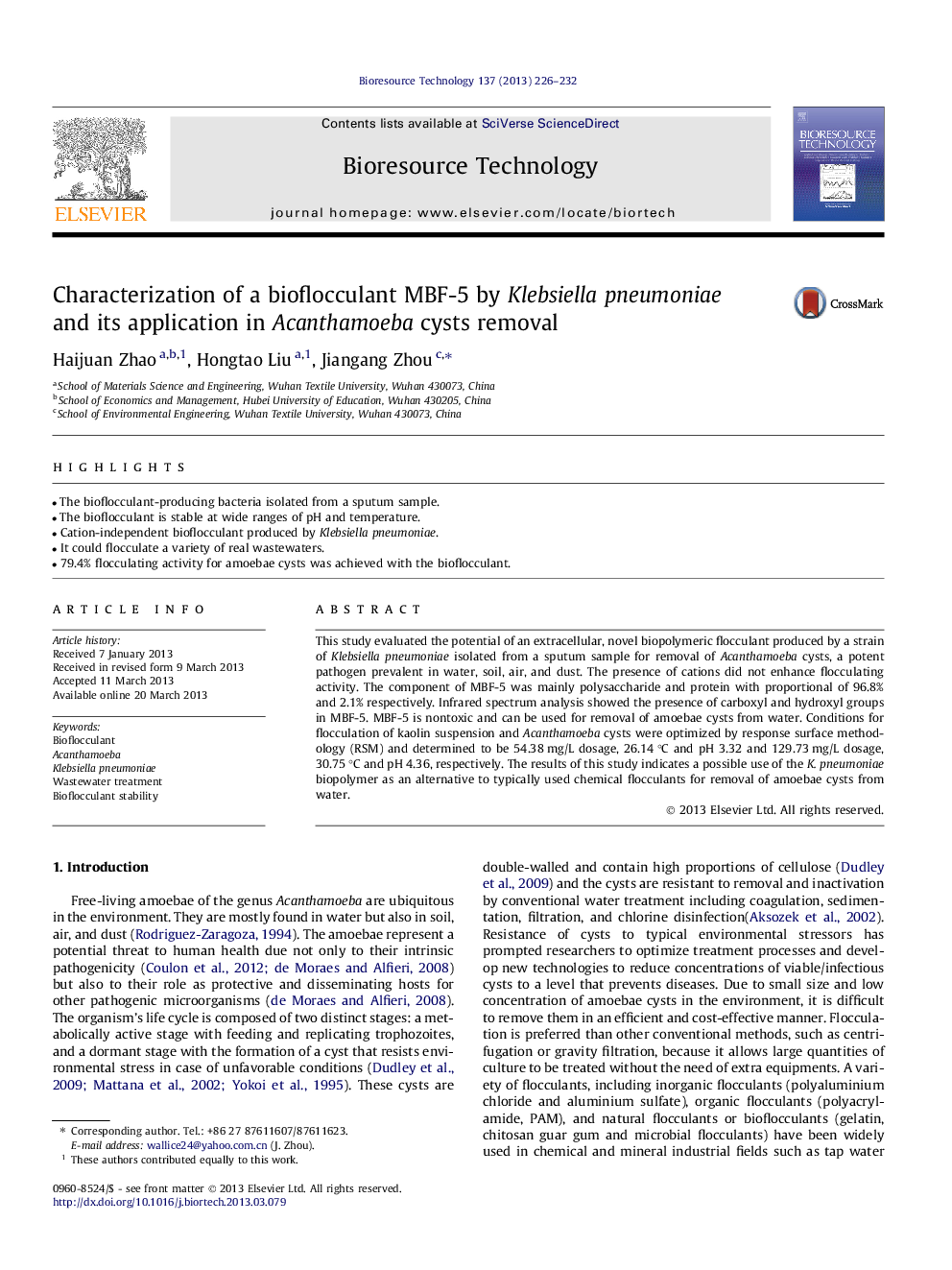| Article ID | Journal | Published Year | Pages | File Type |
|---|---|---|---|---|
| 681157 | Bioresource Technology | 2013 | 7 Pages |
•The bioflocculant-producing bacteria isolated from a sputum sample.•The bioflocculant is stable at wide ranges of pH and temperature.•Cation-independent bioflocculant produced by Klebsiella pneumoniae.•It could flocculate a variety of real wastewaters.•79.4% flocculating activity for amoebae cysts was achieved with the bioflocculant.
This study evaluated the potential of an extracellular, novel biopolymeric flocculant produced by a strain of Klebsiella pneumoniae isolated from a sputum sample for removal of Acanthamoeba cysts, a potent pathogen prevalent in water, soil, air, and dust. The presence of cations did not enhance flocculating activity. The component of MBF-5 was mainly polysaccharide and protein with proportional of 96.8% and 2.1% respectively. Infrared spectrum analysis showed the presence of carboxyl and hydroxyl groups in MBF-5. MBF-5 is nontoxic and can be used for removal of amoebae cysts from water. Conditions for flocculation of kaolin suspension and Acanthamoeba cysts were optimized by response surface methodology (RSM) and determined to be 54.38 mg/L dosage, 26.14 °C and pH 3.32 and 129.73 mg/L dosage, 30.75 °C and pH 4.36, respectively. The results of this study indicates a possible use of the K. pneumoniae biopolymer as an alternative to typically used chemical flocculants for removal of amoebae cysts from water.
